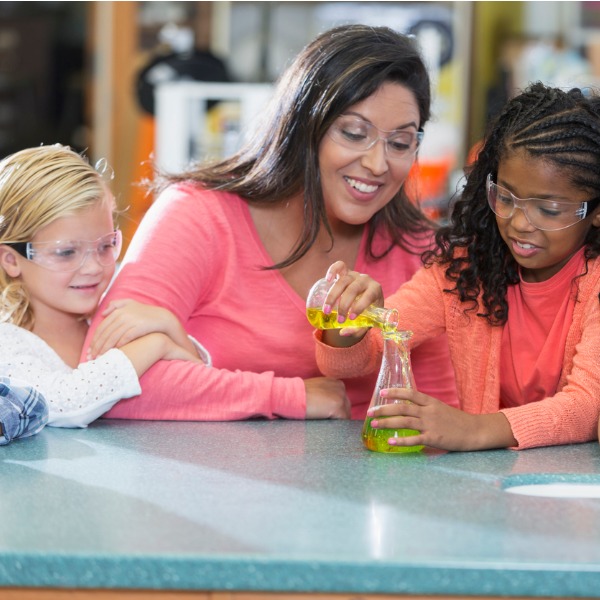Working Safely

Students and teacher working safely (kali9, iStockphoto)
The skill of working safely involves students taking responsibility for their own safe participation, and the safety of others, during Inquiries and Design & Build challenges.
Definition
The skill of working safely involves students taking responsibility for their own safe participation, and the safety of others, during Inquiries and Design & Build challenges.
Working Safely is important because it…
- Keeps students safe and facilitates accident prevention
Developing the Skill of Working Safely
Students |
Educators |
|---|---|
|
Have a clear understanding of what safe practices in their classroom look like and sound like |
Model and discuss with students appropriate safety practices for different types of Inquiries and Design & Build challenges. Encourage students to take appropriate and increasing responsibility for their own safety and the safety of others (e.g., by putting tools, equipment and materials back in their proper place; by alerting the educator when they feel something is unsafe). |
|
Follow established safety procedures when working with materials, tools, and equipment |
Closely monitor all student Inquiries and Design & Build challenges to ensure that students are following established procedures. |
|
Identify possible safety concerns |
Encourage students to bring to the educator’s attention anything that could be a potential safety hazard (e.g., water on the floor, a tangle of electrical cords, a student with long hair that is not tied back). |
|
Show care and concern for their safety and that of others |
Notice and name when students are showing care and concern for themselves and others (e.g., “See how [student x] helped [student y] hold the piece of wood so that it would not move around while [student x] was hammering in the nail.” “All of the members of group 4 are wearing their safety glasses so I know that they are ready to begin.”). |
|
Cleanup equipment and materials after use |
Ensure that students know the proper places to return equipment (e.g., boxes for magnifying lenses, tool box) as well as how to safely clean up and dispose of cleaning materials (e.g., wet paper towels) after Inquiries and Design & Build challenges. |
Related Skills